MANILA, Philippines--The doctor is online.
Facing a laptop with a built-in camera, and wearing a headset, the specialist is ready to give medical advice to another doctor or a health worker thousands of kilometers away from the University of the Philippines-Philippine General Hospital in Manila City.
Soon, he will be using the software being developed by the College of Engineering of the University of the Philippines Diliman which can transmit medical information like a patient's blood pressure, temperature or even electrocardiogram (ECG) results from provinces as far and as isolated as Batanes.
Netizens usually use them for leisure, but the National Telehealth Center is maximizing free online resources, like the Internet call software Skype, to provide healthcare access even to remote areas in the country.
"Our vision is to provide telemedicine to remote, underserved areas. We do not accept geographic limitations for people not to get basic health services," center director Alvin Marcelo told the Philippine Daily Inquirer in a recent interview.
In just a few clicks, a doctor in a remote village can log into the center's website, called buddyworks, and send a query, which is received instantaneously in the computer system of the center's office.
The system is manned by two nurses and functions like a hospital triage system. They study the query and if necessary, refer it to a specialist in the UP-PGH.
Information exchange could be through the website. If immediate response is needed, then the specialist reaches the doctor seeking advice using Skype.
For an enormous vision, the center has a small office in UP Manila. For each video call, the center has three computers simultaneously working. There is a laptop on the center of a small table equipped with a webcam where Internet calls are made.
To its right is a computer for the specialist to access the information base. Marcelo said they have been developing a database of healthcare information about remote villages which could inform the specialist about the nearest hospitals and available facilities to the doctor calling.
To its left is another computer where test results and patient information can soon be uploaded almost instantaneously from the villages and downloaded at the center.
To facilitate information exchange, the center has distributed laptops and gadgets to a few sites.
The system would give health care access to more people regardless of distance and at the same time, make health care more efficient, Marcelo said, recalling a recent example where a doctor referred to the center the case of a teenager suffering from a bone infection in Batanes.
The patient would have been brought directly to the PGH to queue along with the hundreds of regular patients the hospital receives per day. The family would have paid much for the airfare and for a place to stay while consultation was ongoing.
But since the doctor referred his case to telemedicine, a PGH specialist studied the emailed case history, physical examination and x-ray results of the teenager. To get more information, the surgeon also did a video call to see the teenager, who sat beside the doctor in Batanes.
The surgeon prescribed intravenous antibiotics for 10 days and when the teenager was finally brought to the PGH, the patient was ready for operation.
Marcelo explained this saved the family from spending more and maximized the capabilities of health practitioners in Batanes.
The system was also maximized in helping health workers give aid to typhoon victims in the Bicol region in coping with trauma through what Marcelo called as "tele-psychiatry."
"It has been a big help to me and to my patients," general practitioner Cherrilyn Zablan, the only doctor for more than 6,500 villagers in the town of Alilem in Ilocos Sur, also said.
According to Zablan, assigned in the remote town for almost two years, the nearest hospital is 45 minutes away while the nearest tertiary hospital is almost two hours away and both do not have many specialists as well.
"It has helped me a lot in accessing information. The help of a specialist is just one click of the mouse or one text message away," she added.
The center started in 1998 with a humble vision—to just provide a website where the public can browse reliable health information, Marcelo said.
Soon, the proponents of the project, fresh from training in the US and the UK, thought of expanding the project and proposed to the government what they called as "telehealth," which would "use the Internet to facilitate interaction between remote doctors and PGH doctors."
Supported by government funds, the project began in 2005 in a few remote villages in Cagayan, Leyte, Capiz and Lanao Del Norte.
The center distributed laptops to the project sites, which included medical colleges, government hospitals and provincial health centers.
The project did not fly, however: The center did not get any referrals in the first two years.
"We realized that telemedicine is very complex. Technology plays an important role, but more than that is the organizational aspect and the trust that is involved," Marcelo explained.
The sites for the project also did not lack doctors and specialists. Instead of going online for telemedicine, the general practitioners could just go to specialists in the provinces.
Thus, the center networked with Department of Health's doctor-to-the-barrios program. The program has been deploying new doctors in very remote areas and "they were yearning for somebody to consult," Marcelo added.
There was another glitch, however. The areas were so remote there were no Internet connections.
But the country is not dubbed as the text capital world for nothing: The center shifted to the short messaging service (SMS) platform, more popularly known as text messaging.
"We shifted to a device which serves as a personal extension of Filipinos. This felt perfectly natural," Marcelo adds.
So aside from the using the Internet, telemedicine also accepts referrals through text messages. It has a computer system which stores the cell phone numbers of all member-doctors and specialists. It accepts the messages and also forwards them to appropriate specialists.
Thanks to text messaging, referrals to the center grew from nothing in the first two years to at least 638 between October 15, 2007 and October 10, 2008.
The center has been getting referrals from remote areas and islands in Pangasinan, Ilocos Norte, Ilocos Sur, Abra, Cagayan, Quezon, Ifugao, Bohol, Aklan, Romblon, Palawan, Negros Occidental, Cebu, Masbate, Iloilo, Sibugay, Lanao Del Norte, Lanao Del Sur, Cotabato, Bukidnon, Surigao Del Norter, Surigao Del Sur, Zamboanga Del Norte and Tawi-Tawi.
Zablan said that as a general practitioner, she encountered uncommon cases where she needed expert advice to arrive at the correct diagnosis.
Most of her patients are poor residents who cannot afford transportation fares and consultation fees to find specialists.
She recalled having a patient whose legs were paralyzed, but thanks to a series of email consultations with a specialist at the UP-PGH, she was able to give the correct diagnosis.
Zablan uses her cell phone as a way to send e-mails to the center. She also sends some of her queries through text messaging.
The system is so simple it can save lives.
Nurse Alexandra Belle Bernal recalled receiving a text message from a village doctor in Leyte months ago: A 3-day-old baby suffered from blood infection and was having fever. The nearest hospital can only be reached by boat—and there was a storm.
They forwarded the query to Marcelo. They quickly phoned the doctor to say that the baby should be given antibiotics—not orally—but through intravenous therapy.
Though Bernal missed actual patient care—of talking to them, seeing them, making sure they are fine—she recognized the importance of what she has been doing, working in an online triage.
"This is very important especially here in the Philippines because we have so many islands. Like in that case (in Leyte), they did not have a specialist in the island," Bernal says.
Telehealth is not only about providing medical advice. Marcelo said prevention would be far better, so the center has been training health workers, like midwives and nurses, deployed in far-flung areas, using video conferencing.
The center is focusing on training health workers how to deal with poisoning, stroke, tuberculosis and bird flu. Through video conferencing, health workers gathered in Cebu, for instance, can ask questions from resource speakers in Manila City.
Telemedicine and training are intertwined. Marcelo said they have been aiming to spread the reach of telemedicine in areas which have not been able to get doctors. If health workers like midwives and nurses in these areas can be trained to be "tele-presenters," patient consultation can soon be done online.
The center has been benefitting far-flung general practitioners who could refer cases to specialists and at the same time, has been giving doctors at the UP-PGH a "social benefit," Marcelo said.
There are about 10 specialists from the UP-PGH who are among the regular pool of experts for the center, according to Marcelo. They offer their time, services and knowledge for free.
"They (PGH specialists) feel that they are able to help even beyond their physical limitations. They get to learn about the situation in remote areas, about the conditions there," Marcelo says.
The system is not flawless, however.
Marcelo said a national broadband system, like those in many neighboring nations, would boost national healthcare system through telemedicine, as what has been done in other countries.
But as long as an Internet connection is available, phone signals do not fluctuate, and supply of electricity is stable, health workers in remote villages can be assured of help. The doctor is always in. Or online.


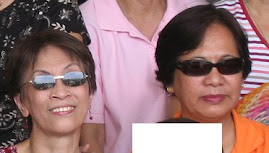


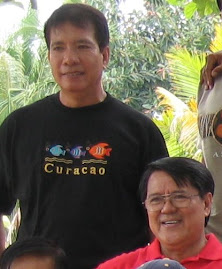
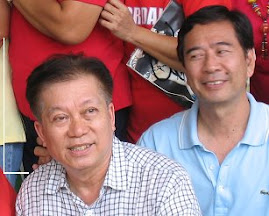
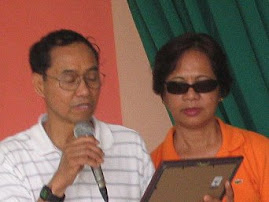
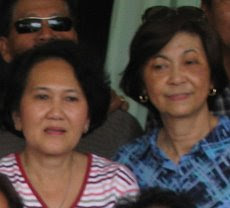

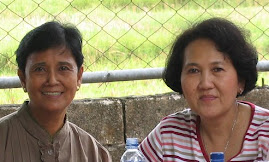








No comments:
Post a Comment